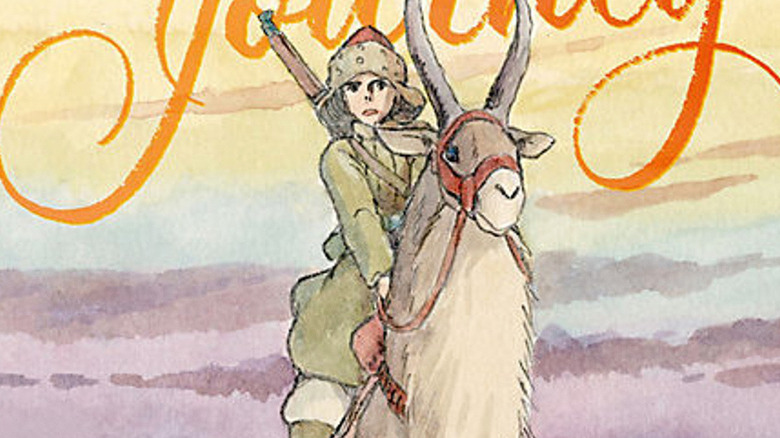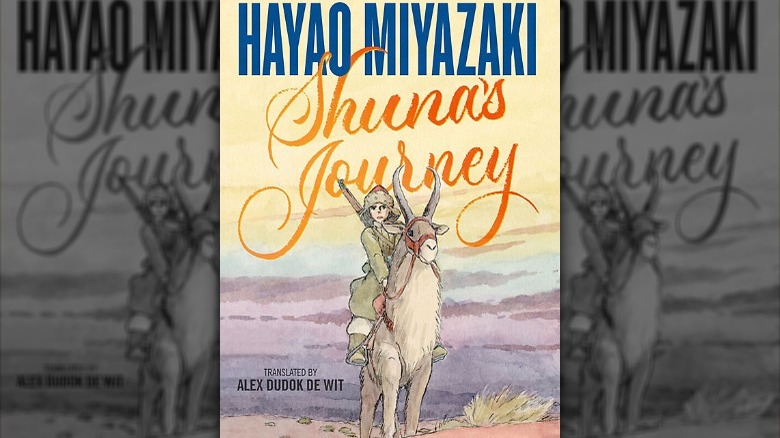Hayao Miyazaki's Graphic Novel Shuna's Journey Finally Gets English Translation After Four Decades
There's some semblance of justice and gentleness in this world after all: renowned/beloved animator and film director Hayao Miyazaki's first standalone graphic novel, "Shuna's Journey," is FINALLY receiving an American release after four whole decades.
According to Gizmodo, translator Alex Dudok le Wit will be helming the English translation of the book, which is set to receive a release via the Macmillan graphic novel imprint, First Second. In line with Miyazaki's core aesthetics, "Shuna's Journey" is an homage to the traditional emonogatrari (illustrated story) comics of late '40s and '50s Japan, as opposed to the stylistics of contemporary manga.
A Tibetan folk tale come to life
Based on the pictures shared by le Wit on his official Twitter, Miyazaki's graphic novel is filled with beautiful watercolor illustrations with minimally narrated captions, and it is endearing to simply witness these snippets. The visual and narrative themes in "Shuna's Journey," which was first published in 1983, contains strands of Miyazaki's signature style, as seen in films such as "Princess Mononoke" and "Nausicaä of the Valley of the Wind." Miyazaki's fascination with these elements can also be glimpsed in one of his earliest published works, namely "Sabaku mo Tami" (People of the Desert").
The core narrative follows Prince Shuna, as he attempts to find a solution to his kingdom's barren lands, setting off in search of answers. On his way, he meets a captive girl named Thea, who he rescues, making enemies of her captors in the process. Battling all odds, Shuna continues his journey west, hoping to find the golden grain that is supposed to bring prosperity to his kingdom and people. The story mirrors the themes and world-building present in "Nausicaä," and is based on a Tibetan folk tale. Here's how de Wit describes the novel:
"The book isn't so much a manga as an emonogatari (illustrated story), with all-watercolour images and text mostly presented as captions. It is based on a Tibetan folk tale, and the fantastical pseudo-Central Asian setting has a lot in common with the world of NAUSICAÄ.
SHUNA also prefigures other Studio Ghibli films, including PRINCESS MONONOKE (which borrows visual and narrative ideas from it) and Goro Miyazaki's TALES FROM EARTHSEA (which is explicitly based in part on the book).
Apart from all that, it's just a really beautiful story, strange even by Miyazaki's standards, sombre and luminous by turns. I can't wait for this to be out!"
Apart from all that, it's just a really beautiful story, strange even by Miyazaki's standards, sombre and luminous by turns. I can't wait for this to be out!
(Miyazaki's original afterword will be included, as will a new introduction by me.) (4/4) pic.twitter.com/y5xGwk1WKX
— Alex Dudok de Wit (@dudeydok) February 22, 2022
Miyazaki, of course, is one of the world's most well-known animators and the co-founder of Studio Ghibli, having etched wondrous, heartrending tales such as "My Neighbor Totoro," "Howl's Moving Castle," "Kiki's Delivery Service," and "Spirited Away." Although Miyazaki touches upon heavier, more serious topics about human existence, his films have always had a quality of healthy escapism embedded within them, be it in the form of a naive nostalgia for childhood or a sincere craving for a quieter, simpler life. As there is (always) something inherently humane about Miyazaki's film and art style, the news about "Shuna's Journey" is a welcome one.
An official release date for the English translation of "Shuna's Journey" has not been revealed as of yet.

